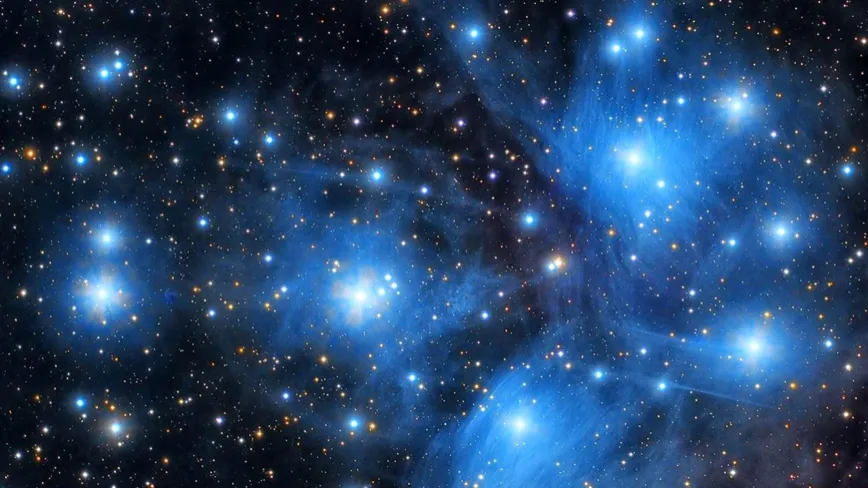The Pleiades in mythology
In the clear and unpolluted night skies of antiquity the Pleiades star cluster was an object of wonder and interest. It was the subject of myth and legend in almost every culture on the planet.
As the Pleiades cluster is close to the ecliptic (within 4°) in the constellation of Taurus it is a spring and autumnal 'seasonal' object in both the northern and southern hemispheres. Being close to the ecliptic, there are frequent occultations of the cluster with the Moon and planets. To our superstitious ancestors these were, no doubt, portentious events. Likewise, the apparent annual motion of the cluster would have been highly significant. The heliacal (near dawn) rising of the Pleiades in spring in the northern hemisphere has from ancient times augured the opening of the seafaring and farming season: while its dawn autumnal setting marked the season's end.
The Pleiades are among the first stars mentioned in literature, appearing in Chinese annals of about 2350 BC. The earliest European references are somewhat later, in a poem by Hesiod in about 1000 BC and in Homer's Odyssey and Iliad.
The Bible contains three direct references to the Pleiades in Job 9:9 and 38:31, and Amos 5:8, and a single indirect reference in the New Testament. This latter passage (Revelation 1:16) describes a vision of the coming of the Messiah – who holds, in his right hand, seven stars…
The etymological derivation of the name Pleiades (Πλειαδεσ) is uncertain. Robert Graves, the late English poet and writer, records in his 'The Greek Myths' (1955) that it may be derived from either the Greek 'plein' for 'to sail', or 'pleios' meaning 'many'. Another possible root is from Pindar, an early Greek poet, who named the cluster the Peleiades – 'a flock of Doves' – and this is, perhaps, the original form. A nearby cluster has retained its animalistic classical name of the Hyades, 'the Piglets'.
The 19th century poet Alfred Lord Tennyson probably did not realise how metaphorically close to the truth he was when he described, in his poem Locksley Hall, the rising Pleiades:
Many a night I saw the Pleiads, rising thro' the mellow shade,
Glitter like a swarm of fireflies tangled in a silver braid.
Poetic and apt – recent telescope observations have revealed that this most famous of open clusters is comprised of some four hundred stars wreathed in complex nebulæ of dust and gas.
Credit www.pleiade.org
Images from starwalk.space
